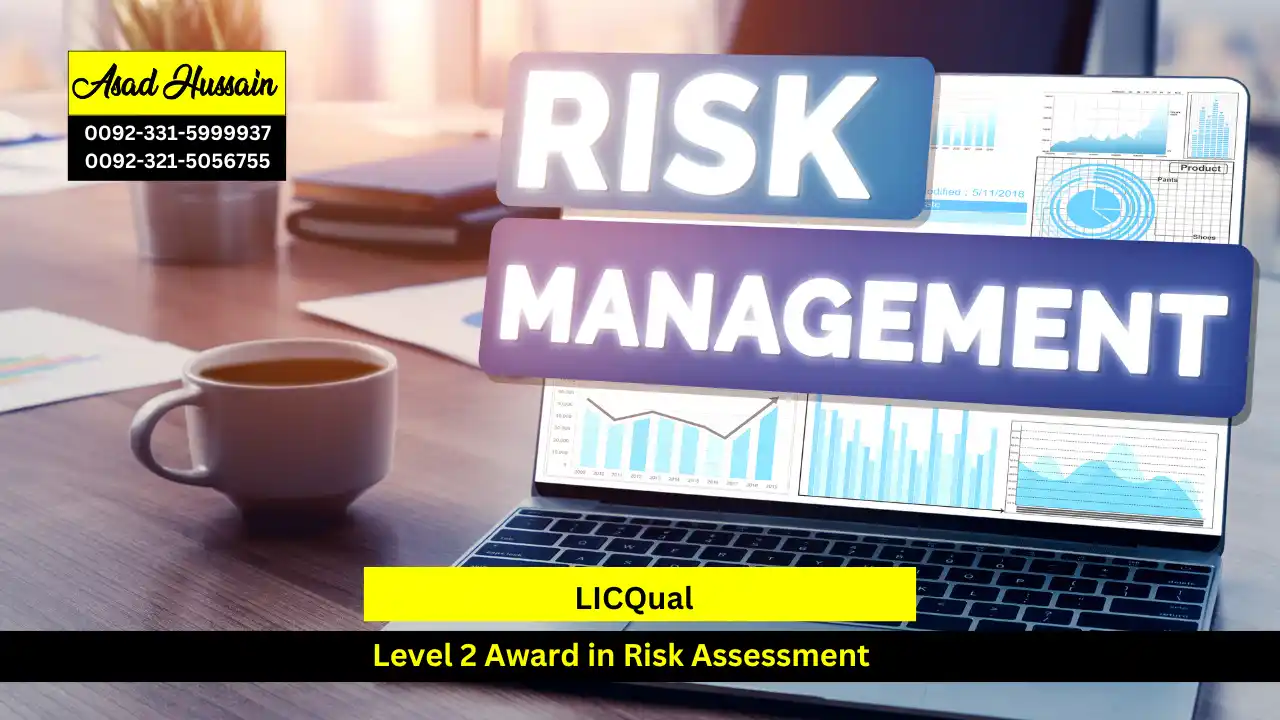In today’s rapidly evolving business landscape, the ability to identify, assess, and manage risks is essential for maintaining a safe and compliant workplace. The Level 2 Award in Risk Assessment is a foundational qualification designed to equip individuals with the knowledge and skills necessary to conduct effective risk assessments. This blog post explores what the Level 2 Award in Risk Assessment entails, its benefits, and why it might be the right choice for you or your organization.
The Level 2 Award in Risk Assessment is a qualification aimed at individuals who need to understand and apply the principles of risk assessment in their roles. It is typically targeted at those who are responsible for assessing risks in their workplace but are not yet in managerial or advanced safety roles. This course covers the basics of risk assessment, including how to identify hazards, assess risks, and implement control measures to mitigate those risks.
The Level 2 Award in Risk Assessment is a vital qualification for anyone involved in managing health and safety within an organization. By equipping yourself with the skills to conduct thorough risk assessments, you not only contribute to a safer working environment but also enhance your professional development. If you’re looking to start or advance your career in health and safety, this award is a valuable step forward.
Program Highlights
Mandatory Units
- Introduction to Risk Assessment
- Identifying Hazards and Risks
- Risk Assessment Methods
- Implementing Control Measures
- Implementing Control Measures
- Communication and Documentation
- Basic Literacy and Numeracy: Participants should have a basic level of literacy and numeracy to understand the course materials, complete written assessments, and engage in practical exercises. This generally means having at least a basic understanding of reading, writing, and arithmetic.
- Minimum Age: Most training providers require participants to be at least 16 years old. However, this may vary, so it’s essential to check with the specific provider.
- No Previous Qualifications Required: The Level 2 Award in Risk Assessment is an introductory course and does not typically require any prior qualifications in health and safety or risk assessment. It is suitable for those with limited or no prior knowledge of risk assessment.
- Basic Understanding of Health and Safety: While not always mandatory, a basic understanding of health and safety principles can be beneficial. Some providers may recommend having a general awareness of workplace health and safety practices.
- Employer Support (if applicable): If the course is being undertaken as part of your employment, your employer might need to support your participation. In some cases, employers may require you to complete specific pre-course tasks or assessments.
- Commitment to Attend: As the course often involves practical elements and interactive sessions, participants should be committed to attending all sessions and completing any required coursework or assessments.
- Additional Recommendations
- Interest in Health and Safety: A genuine interest in improving workplace safety and understanding risk management will help you get the most out of the course.
- Willingness to Learn: Being open to learning new concepts and applying them practically is crucial for successfully completing the course.
Introduction to Risk Assessment
- Understand the Concept: Demonstrate an understanding of what risk assessment is and its importance in maintaining health and safety in the workplace.
- Legal Framework: Explain the key legal requirements and regulations related to risk assessment.
- Purpose and Benefits: Identify the primary purposes and benefits of conducting risk assessments.
Identifying Hazards and Risks
- Hazard Identification: Identify various types of hazards that may be present in different work environments, including physical, chemical, biological, and ergonomic hazards.
- Risk Evaluation: Assess the potential risks associated with identified hazards, considering factors such as likelihood and severity.
- Risk Prioritization: Prioritize risks based on their potential impact on health and safety.
Risk Assessment Methods
- Assessment Techniques: Explain different methods and techniques for conducting risk assessments, including qualitative and quantitative approaches.
- Risk Assessment Tools: Describe the tools and resources available for conducting effective risk assessments.
- Application of Methods: Apply appropriate risk assessment methods to various scenarios to identify and evaluate risks accurately.
Implementing Control Measures
- Control Measures: Identify and describe different types of control measures that can be implemented to mitigate or eliminate risks.
- Hierarchy of Controls: Understand and apply the hierarchy of controls (elimination, substitution, engineering controls, administrative controls, and personal protective equipment) to manage risks effectively.
- Implementation: Demonstrate the ability to implement control measures and evaluate their effectiveness in reducing or eliminating risks.
Communication and Documentation
- Effective Communication: Explain the importance of communicating risk assessment findings and control measures to relevant stakeholders, including employees and management.
- Documentation: Understand the requirements for documenting risk assessments, including the format and content of risk assessment reports.
- Record Keeping: Develop and maintain accurate records of risk assessments and control measures to ensure compliance and facilitate future reviews.
The Level 2 Award in Risk Assessment is designed for individuals who are involved in, or responsible for, ensuring workplace safety but are not yet in advanced safety management roles. This includes employees who need to conduct or participate in risk assessments, supervisors, and team leaders who oversee the implementation of safety measures, and health and safety representatives looking to solidify their foundational knowledge. It is ideal for those seeking to enhance their understanding of basic risk assessment principles and improve their ability to identify hazards, evaluate risks, and implement effective control measures. The course is accessible to beginners and those with limited prior experience in health and safety, making it a valuable starting point for anyone aiming to contribute to a safer working environment.







